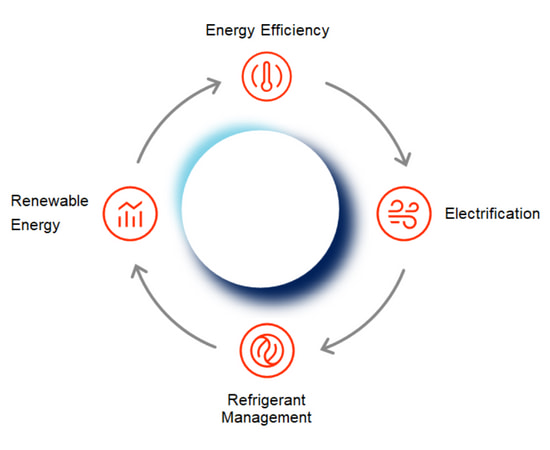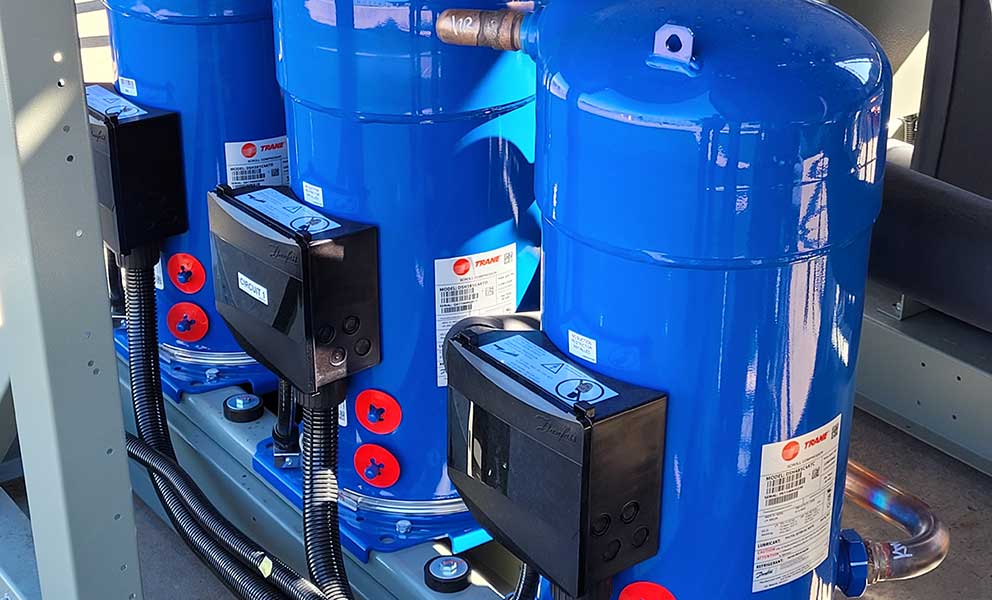Staying relevant in today’s competitive market can be challenging, especially since there's more to success than simply meeting traditional business goals. Thriving organizations must now look beyond decades-old drivers to examine their impact on the environment as they begin investing in corporate sustainability efforts. Added pressures from stakeholders, customers, and government regulations require businesses to act responsibly and with urgency.
Reducing your carbon footprint is a common component of any sustainability plan, but what does that even mean? A carbon footprint is the measurement of the total amount of greenhouse gas emissions generated by an organization. In short, the larger the carbon footprint, the larger the negative effect on the air we breathe and our local communities.
The path to reducing your carbon footprint is through decarbonization - the process of decreasing and even removing CO2 emissions. We previously discussed what decarbonization is and why it matters here.
Business leaders face many common barriers like time, costs, and a clear starting point. A Trane expert can define and guide you through four key pillars of decarbonization to ensure efficiency and results throughout your journey.
1. IMPROVE YOUR ENERGY EFFICIENCY
Start with looking at your building envelope and look for areas of air leakage and deficient insulation. Shifting to LED lighting is simple, cost-effective, and helps to improve energy efficiency. Upgrading to energy-efficient equipment or optimizing your operations using your Building Automation System, will make an enormous impact on your energy use. These are often the first steps in reducing your carbon footprint.
2. BEGIN ELECTRIFICATION
Now that you’re more energy efficient, you can shift your energy source to electric. Moving away from gas and other fossil fuel energy sources is the next critical piece of decarbonization. Electric energy reduces carbon emissions and helps lay a strong foundation for bigger conversions around clean energy. This will prepare your business to benefit when the grid moves to clean energy. Trane offers a portfolio of solutions to support your shift to electric energy.
3. REFRIGERANT MANAGEMENT
Converting your HVAC system and other onsite equipment to next-generation, low-GWP1 refrigerants is critical to slowing CO2 emissions. Regular maintenance and management will ensure your equipment continues to perform efficiently. Learn more about how Trane provides refrigerant management solutions that fit the needs of every customer and climate.
4. CONVERT TO RENEWABLE (CLEAN) ENERGY
Once shifted to electric energy, converting to a clean energy source like solar or wind will decrease carbon emissions even more. These energy sources can provide the same amount of energy as electricity and are carbon neutral.
Just as every business is unique, each path to decarbonization is too, but reducing your carbon footprint is achievable through these defined pillars.
A dedicated, local Trane team will assess your goals, evaluate current regulations, and weigh current market opportunities on a local level. This will create a strategic plan that fits your timeline, budget, and goals so you can begin reducing your carbon footprint this year.
Get started on your decarbonization journey today.

Trane is a strategic business of Trane Technologies, a global climate innovator. Trane Technologies has a longstanding history as an industry leader for sustainability and has made bold 2030 Sustainability Commitments that include its Gigaton Challenge which aims to eliminate one gigaton – one billion metric tons – of customers’ carbon emissions by 2030.
1 Global Warming Potential (GWP) was developed to allow comparisons of the global warming impacts of different gases. Specifically, it is a measure of how much energy the emissions of 1 ton of a gas will absorb over a given period of time, relative to the emissions of 1 ton of carbon dioxide (CO2) SOURCE: https://www.epa.gov/ghgemissions/understanding-global-warming-potentials
Decarbonization

About the author
Doug Robertson, Account Manager Turnkey
Doug Robertson is an Account Manager for Trane Commercial where he has successfully completed hundreds of projects saving customers many millions of kWHs electrical and thousands of gJs annually. He has been with Trane for 26 years and in total has worked in the HVAC industry for over 37 years. Not only does Doug have a Master's Degree in Business Administration but he continues to grow his expertise and education in the industry by attending diploma and certification programs. He has a Diploma in Automation Technology and Building Technology, is a Certified Energy Manager (CEM) with the Association of Energy Engineers, and is an Applied Science Technologist (AScT) with the Applied Science Technologists and Technicians of British Columbia.
Doug has been married for 35 years and has two children and enjoys spending his spare time holding, skiing, and backpacking.



































































































